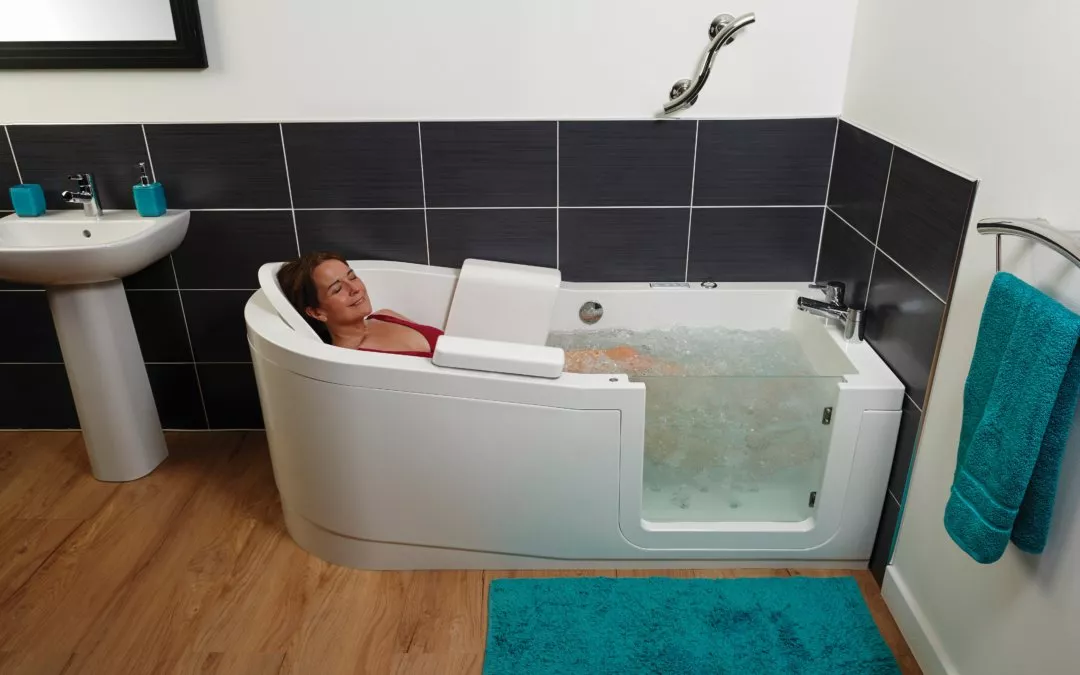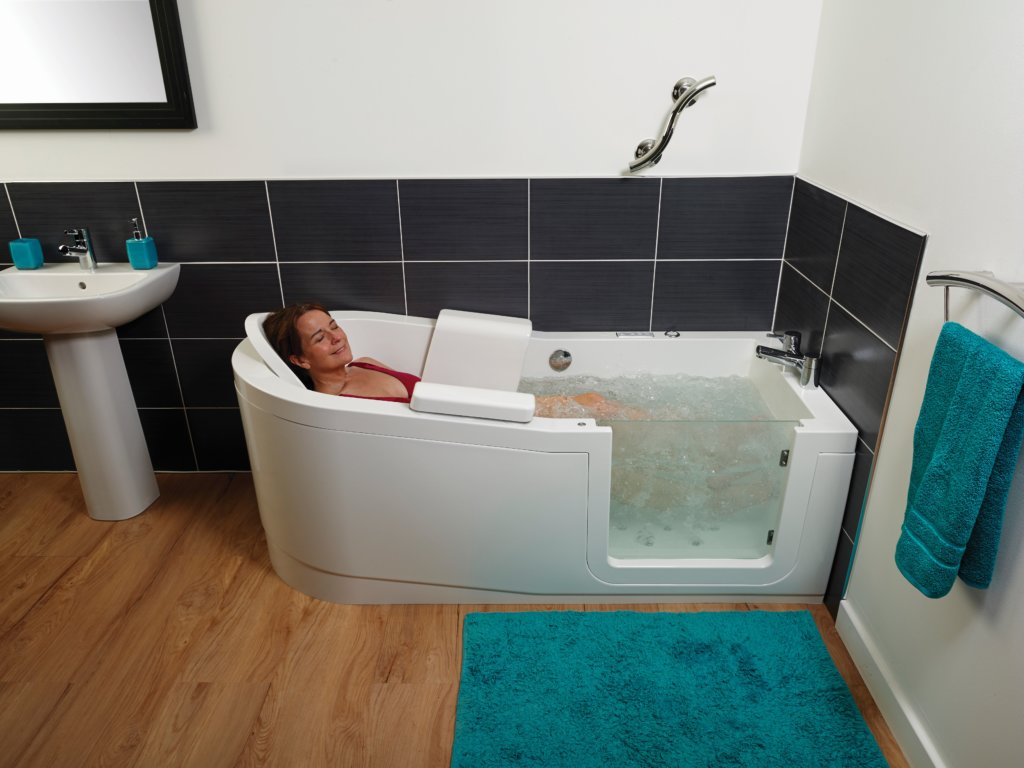
Water has been used as a healing tool across different cultures for many centuries – with everything from ancient Roman baths to hot mineral springs. Fast forward to today and hydrotherapy continues to play an important role in both traditional medicine and holistic practices.
There are many benefits of hydrotherapy, and health professionals regularly prescribe it to support recovery, relieve pain and improve mental wellbeing. For the elderly or those with restricted mobility, hydrotherapy provides not only physical relief, but also offers increased confidence and independence
Get a FREE Brochure
Simply complete our form to see a full range of bathing solutions & their key features. It takes no time at all!
What is hydrotherapy?
In simple terms, hydrotherapy is the use of water at different temperatures to help ease pain, improve movement and support overall health and wellbeing. Treatments can range from warm water exercises and cold compressions, to saunas, ice baths and whirlpool experiences. It’s often prescribed by GPs and physiotherapists to help alleviate conditions such as arthritis, rheumatic ailments and injury recovery, but may also be enjoyed for wellness benefits.
Who needs hydrotherapy?
This treatment can be used to benefit a wide range of people, including those suffering from muscle pain and soreness, those recovering from injury or surgery, and those with other conditions such as:
Musculoskeletal Conditions
These relate to pain, injury, or recovery of the muscles, joints, and bones:
- Osteoarthritis
- Rheumatoid arthritis
- Ankylosing spondylitis
- Muscle strain or ligament injuries
- Lower back pain
Neurological & Neuro-Muscular Conditions
Conditions involving the nervous system and its interaction with muscles:
- Spinal cord injury
- Neurological conditions such as strokes or brain injuries
- Cerebral palsy
- Parkinson’s disease
- Muscular Dystrophy
Circulatory & Cardiovascular Support
Conditions where hydrotherapy may support heart and vascular health:
- Chronic obstructive pulmonary disease (COPD)
- High blood pressure
- Poor circulation
- Angina
- Following a heart attack
- Following heart or lung surgery
Mental Health & Wellbeing
Hydrotherapy benefits on mood, anxiety, and overall emotional wellness:
- Anxiety and stress
- Depression
- Headaches (especially when stress-related)
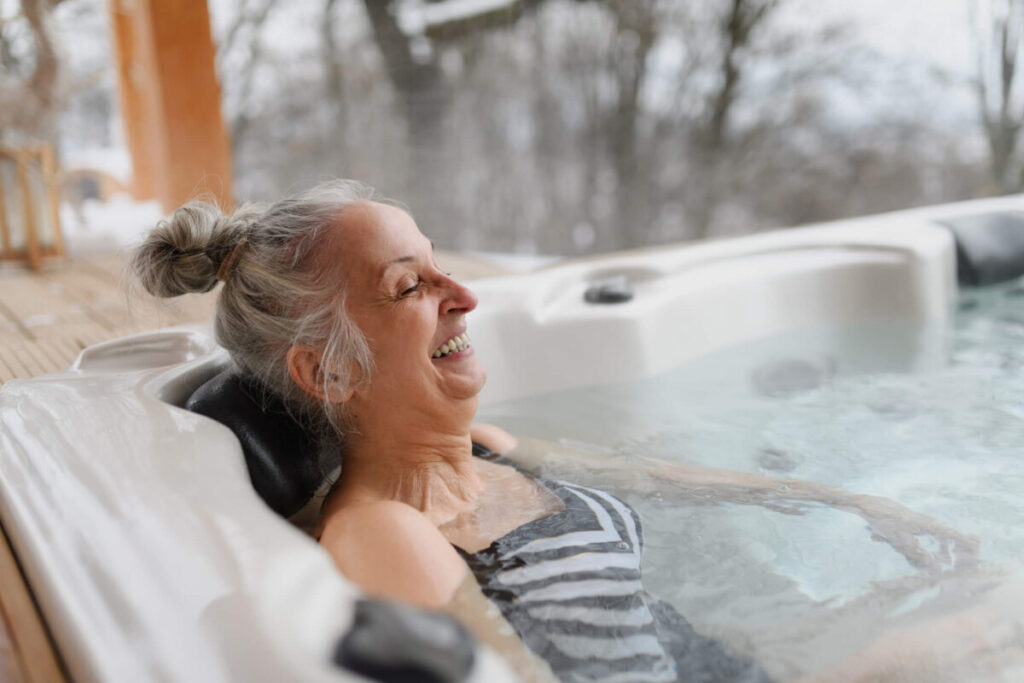
When is hydrotherapy used?
Hydrotherapy is commonly used to help ease everyday discomforts like pain, stiffness and swelling and is a gentle, natural way to aid recovery and alleviate symptoms. Water therapy also provides relief for burns, assists with weight loss, supplements physical therapy and helps to ease pregnancy symptoms such as high blood pressure. Not only that, it also supports those with chronic conditions, like arthritis and multiple sclerosis.
What are the benefits of hydrotherapy?
The benefits of hydrotherapy are well documented, especially for supporting conditions that are common amongst the elderly. These benefits include:
Supporting a strong immune system
Hydrotherapy is known to boost circulation and improve lymphatic flow – this helps white blood cells fight infection.
Reducing stress
The use of warm water therapy helps to decrease blood pressure, improve sleep and calms the nervous system (which can help with anxiety).
Relieving pain and reducing muscle tension
Buoyant warm water assists in reducing pressure on joints and soothes muscles – it’s also a natural pain reliever and stimulates the release of endorphins. It can also impact pain perception.
Rehabilitation for injuries and conditions
The use of heated water increases blood flow, alleviates pain and improves circulation, which has been shown to reduce swelling and support injured joints and muscles. It’s used to effectively help conditions such as lower back pain and arthritis.
Detox benefits
Hot water and steam encourage sweating, which supports the body’s natural detoxing system to eliminate toxins. Not only that, studies have indicated that saunas may benefit brain health, which could lower Dementia risk.
Boosts mental health
According to the Centres for Disease Control and Prevention (CDC), water-based exercise like swimming has been shown to lift mood, reduce anxiety and help with depressive symptoms.
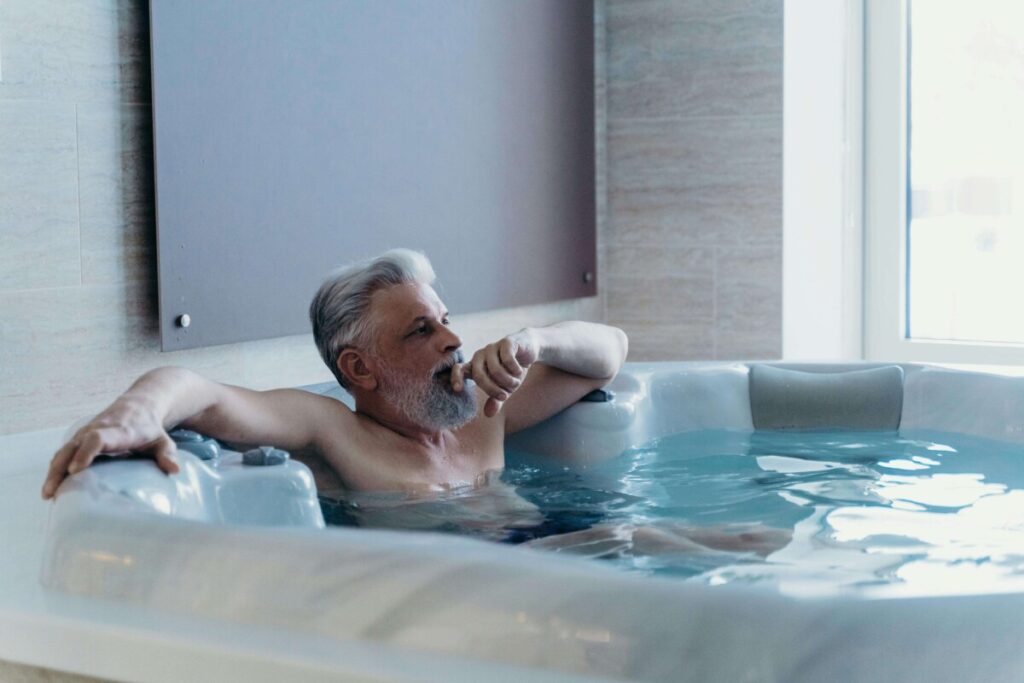
Types of hydrotherapy
There are various ways to enjoy the benefits of hydrotherapy, whether that’s at a luxury spa, a health centre or even in the comfort of your own home with a walk-in bath. Some examples of hydrotherapy options include:
Contrast Hydrotherapy
This involves alternating the use of hot and cold water to help reduce inflammation, improve circulation, support post-exercise recovery and even boost the immune system. This form of hydrotherapy is used by many as part of their daily shower routine or experienced at a spa. Heat packs and ice packs can also be applied to the body for similar benefits.
Hydrotherapy Pool
With temperatures of around 33–36ºC, hydrotherapy pools are typically warmer than standard swimming pools and provide gentle relief for back pain or conditions like arthritis. The warmer water is excellent for low-impact exercises and allows some slight resistance, without the need to fight gravity. Hydrotherapy pools are ideal for working the muscles and raising the heart rate, without causing stress to the joints. So if you’ve ever wondered ‘what is a hydrotherapy pool?’, now you know!
Compressions or Wraps
This form of therapy uses towels soaked in hot or cold water, which are then applied to the body to relieve pain or inflammation. Hot compresses are great for assisting with circulation and blood flow, which in turn may help to alleviate stiff muscles. This type of hydrotherapy can easily be used at home in conjunction with essential oils to provide targeted relief for mild symptoms.
Saunas & Steam Rooms
While both of these promote sweating, saunas use dry heat, and steam rooms use moist heat. Use of these facilities may help with easing muscle tension and excretion of toxins and impurities from the skin.
Warm Baths
Easily the most accessible form of hydrotherapy, a warm bath is something that can easily be enjoyed at home. A 30-minute soak in a warm bath with remedies such as Epsom salts, mineral mud and aromatherapy oils can help with muscle relaxation and support skin conditions.
Sitz Baths
This is a shallow bath that uses warm or cold water to soothe specific areas. It’s most commonly recommended by health providers after childbirth or for relief from haemorrhoids or cramps.
Immersion Therapies
Having gained popularity in recent years, this type of therapy involves fully immersing the body into hot or cold water. Examples include: hot tubs, plunge pools, whirlpools and ice baths. Immersion therapies can improve circulation, ease muscle pain and even boost mood.
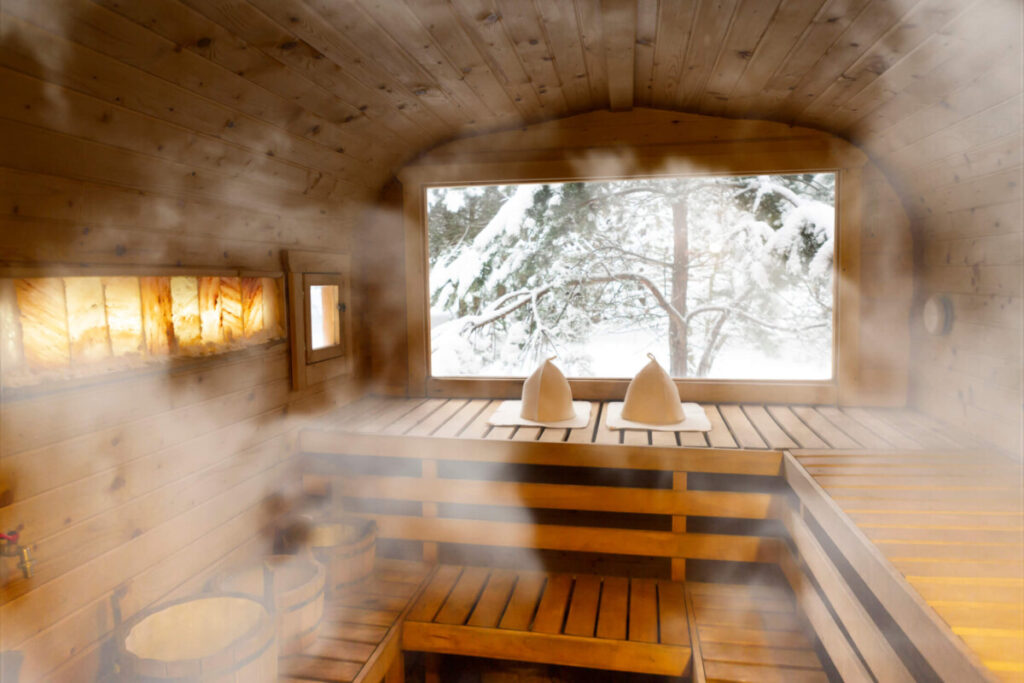
FAQs
What is hydrotherapy?
Hydrotherapy is the use of warm or cold water to help treat a range of sports injuries, medical conditions or improve wellness.
What is a hydrotherapy pool used for?
This is a warm water pool used for low-impact, aquatic exercise.
What to expect from a hydrotherapy session?
If you’ve been prescribed hydrotherapy to help with an injury or condition, your GP or physiotherapist will usually explain what to expect based on your personal needs and specific health issues.
Serious or long-term conditions such as spinal injury or stroke will likely involve one-to-one guidance and assistance from a professional therapist. Alternatively, hydrotherapy sessions at a spa will simply include independent use of facilities like whirlpools, swimming pools or immersion pools.
What should I do before starting hydrotherapy?
It’s advised to always talk to your healthcare provider before starting hydrotherapy. Whether you’re exploring professional sessions, visiting a spa venue or considering at-home options, they’ll be able to guide you with safe approaches to suit your injury or condition and advise on any side effects.
What happens after hydrotherapy?
After your hydrotherapy session, you may find that you feel relaxed, looser in your joints or even a little tired. If you’re under the supervision of a professional therapist, they may provide you with follow-up exercises to carry out at home, or could simply advise you to rest. Be aware that aftercare advice will differ for each person, taking into account an individual’s age, mobility levels and specific condition.






